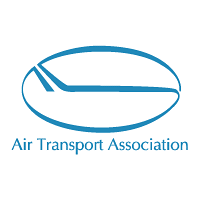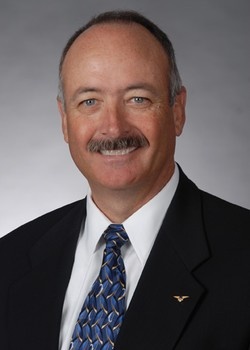Communications, Coordination, Collaboration And Recognition Of
Shared Interests Critical For Future Crisis Management
 Speaking
at the Atlantic Conference on Eyjafjallajökull and Aviation in
Keflavik, Iceland this week, Tom Hendricks, Air Transport
Association Vice President, Operations and Safety talked "lessons
learned" from the April 14th eruption of the Eyjafjallajökull
Volcano.
Speaking
at the Atlantic Conference on Eyjafjallajökull and Aviation in
Keflavik, Iceland this week, Tom Hendricks, Air Transport
Association Vice President, Operations and Safety talked "lessons
learned" from the April 14th eruption of the Eyjafjallajökull
Volcano.
The lengthy eruption proved to be highly disruptive to passenger
and cargo movement, operational control and decision‐making,
and commercial interests, noted Hendricks. He also said, the
breadth of the impact stretched far beyond the Atlantic. With large
numbers of crew and aircraft resources frozen in both Europe and
North America, Hendricks pointed out airlines rushed to reallocate
remaining resources to cover flying in other regions. "The
disruption to planned maintenance activities, crew training events
and to our passengers’ travel plans took a deep toll on
airline franchises and individuals across the globe," he said.
Hendricks said that as the scope of the eruption became
apparent, initial responses by European authorities "proved
confusing to U.S.operators." While admittedly experiencing an
ambiguous risk and crisis management situation, he noted that
guidance from European regulators and navigation service providers
resulted in numerous air turn‐backs, cancellations after gate
departure and other irregular operations.
Hendricks quotes one major U.S. trans-Atlantic operator to
illustrate his point:
"'The eruption of mount Eyjafjallajökull resulted in the
European governments closing two-thirds of European airspace.
Airlines worldwide were forced to cancel flights to and from the
region. During a six‐day period, IATA estimated that the
disruption cost global airlines more than $1.7 billion in lost
revenue. For a three‐day period, when disruptions were
greatest, lost revenues reached $400 million per day and affected
1.2 million passengers per day. During the period, one airline
canceled more than 470 transatlantic flights.
Airlines worldwide have voiced their opposition as to how the
European air navigation service providers handled this event.
Airspace was closed forcing massive cancellations and air
turn‐backs over the north Atlantic to the United States,
without allowing the operators any input into the decision making
and more importantly, not allowing operators to make decisions
based on the traditional worldwide standard of placing the
responsibility for the safety of the operation on the aircraft
operator. At no time, with all the volcanoes erupting all over the
world have such drastic measures been taken.'"

Air Transport Association's Tom Hendricks/FILE
PHOTO
Hendricks said large U.S. international airlines have a strong
history of operating safely in similar environments around the
globe and that volcanic eruptions are not unusual. At times, he
said, near‐daily events occur in Alaska, the Caribbean, Latin
America or Asia that cause potential disruptions to flight
operations. The U.S. model treats volcanic activity as major
weather events and the burden of managing the risk falls to
individual operators and their regulators. The large international
U.S. airline model of sophisticated systems of operational control
backed by the requirement for worldwide rapid and reliable
communication between airline operations centers and the cockpit
facilitates a collaborative decision-making philosophy. Further,
shared operational control between captains and licensed
dispatchers helps to focus both parties on all aspects of managing
risk on a network and individual flight basis.
Hendricks asked,"What have we learned from this event?"
"First, U.S. airlines expended significant effort over several
weeks when the volcano continued to erupt (14 April to late May),"
he said. "Initially, the airline industry was provided with
volcanic-ash advisory information that outlined an area which
included concentrations as small as 10,000 times lower than the
concentration estimated to cause catastrophic engine failure. By 20
April, a second higher threshold was added of 1000 times less
concentration than engine failure. Finally by 18 May, a third
threshold was added. Increased definition of the ash hazard was
made during the continuing eruption but more progress is necessary
and is continuing."
Concluding his remarks, Hendricks emphasized that only through
extensive dialog, consultations and experience with events such as
this, the worldwide aviation community is rapidly enhancing the
capability to more effectively cope with future events. "The ICAO
volcanic ash task force and activities of the European
crisis-coordination cell represent two efforts underway that will
yield tangible benefits in both the short and long term," he said.
"From the U.S. perspective, we stand ready to join our European
aviation partners in implementing solutions that promote the safe
conduct of commercial air operations in environments such as those
affected by the Eyjafjallajökull eruption. The keys for future
success are grounded in communications, coordination, collaboration
and recognition of the shared interests of all parties in operating
safely and reliably. The U.S. industry stands ready to assist and
provide resources to help in that common goal."
The International Conference was organized by Keilir Aviation
Academy in cooperation with the President of Iceland, the Icelandic
Ministry of Transport, the Civil Aviation Administration, ISAVIA,
the Icelandic Meteorological Office, Institute of Earth Sciences at
University of Iceland, Icelandair, ICAO, IATA, ATA, AEA, the US
Embassy in Iceland and the Russian Federations Embassy in
Iceland.
 ANN's Daily Aero-Linx (04.15.24)
ANN's Daily Aero-Linx (04.15.24) Classic Aero-TV: 'No Other Options' -- The Israeli Air Force's Danny Shapira
Classic Aero-TV: 'No Other Options' -- The Israeli Air Force's Danny Shapira Aero-News: Quote of the Day (04.15.24)
Aero-News: Quote of the Day (04.15.24) Airborne 04.16.24: RV Update, Affordable Flying Expo, Diamond Lil
Airborne 04.16.24: RV Update, Affordable Flying Expo, Diamond Lil ANN's Daily Aero-Term (04.16.24): Chart Supplement US
ANN's Daily Aero-Term (04.16.24): Chart Supplement US




